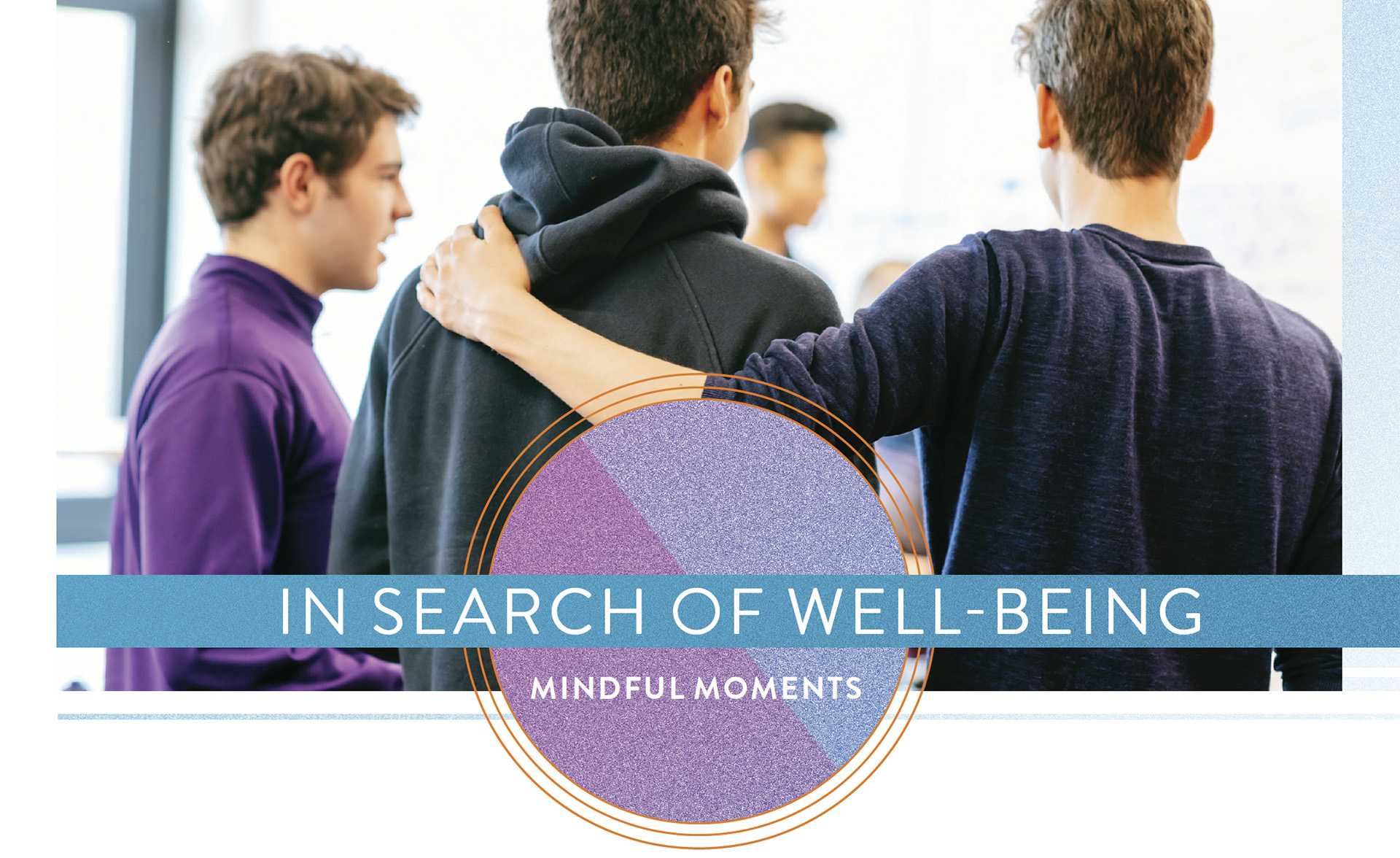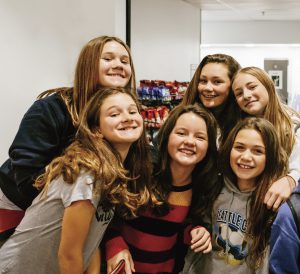
By Sam Uzwack, Head of Middle School
ON A TYPICAL DAY AT EASTSIDE PREP, A MIDDLE SCHOOLER might experience the following…(hang on):
| 7:30 Omelet in the LPC |
| 7:50 Quick chat with friends |
| 8:00 Eighty-five-minute class |
| 9:25 Grab a snack, chat with a friend, and find a teacher |
| 9:35 Another eighty-five-minute class |
| 11:05 Scarf down lunch with friends, off to the sport court for some gaga-ball |
| 11:40 Class meeting |
| 12:30 Another eighty-five-minute class |
| 1:55 Another ten-minute passing period |
| 2:05 A final eighty-five-minute class |
| 3:30 Fifteen minutes of visiting with friends in the LPC |
| 3:45 After-school sports, or theatre, or debate, or chess, or robotics |
| 6:00 Dinner |
| 7:00 Homework |
| 9:00 Sleep |
Repeat…170 times or so. A school day is a fragmented experience, which is why we went to a full block schedule a few years back. Even still, there are many transitions, many different “bosses” throughout the day. Further, our student body and faculty are not ones to sit back and watch the world go by; ours is a hard-charging culture full of energy and ideas. This is one of the things that makes EPS so engaging, and at the same time, one of the things that we need to keep an eye on, in order to promote the overall well-being of our community.
When we talk about the overall workload and stress level of our students, it is tempting to look at broad, sweeping solutions such as “no more homework.” The truth of the matter is, in order for us to do the kind of teaching and learning we hope to do, homework is a helpful tool. But by looking at smaller solutions we can help students manage the daily flow. Partially inspired by our SEL (Social Emotional Learning) curriculum, our Visiting Thinker last fall, Dr. John Medina, and our own teaching experience, a number of faculty began building “mindfulness moments” into various parts of the school day. What follows is a sampling, ranging from fifth to eighth grades, of these experiences.
FROM DAVID KELLY-HEDRICK, LITERARY THINKING 3 TEACHER
Literary Thinking 3 (LT3) started every class with a two-minute silent meditation this past year. On some days this calming and quieting time took longer for some students than others, but overall, this created a nice transition from the previous class or club
or lunch or sport-court activity to our literature class. I used basic mindfulness meditation direction to try and guide students to sit up in a position of comfortable attention for this meditation. I will continue this mindfulness meditation practice in the coming year in LT3.
FROM ALLISON LUHRS, EIGHTH-GRADE GRADE LEVEL COORDINATOR AND LITERARY THINKING 2 TEACHER
 Vandana Chalana (MS and US Yoga Instructor) joined a seventh-grade class meeting to lead mindfulness exercises and teach breathing techniques for stress relief during Winter Trimester Finals Week.
Vandana Chalana (MS and US Yoga Instructor) joined a seventh-grade class meeting to lead mindfulness exercises and teach breathing techniques for stress relief during Winter Trimester Finals Week.
My advisees and I joke that we don’t know whether the room influenced the advisory or the advisory fit the room, but the mere act of holding our advisory meetings in the Yoga room meant we were in the practice of sitting on the floor in a circle (often with the lights out), starting with a check-in, listening carefully to one another, and taking a break to lie down and close our eyes when that was what the group needed.
Group questions sometimes provide time for silliness or deep thought, but they can also provide time for mindfulness. For instance, we might say, “Think silently to yourself about one thing for which you feel grateful right now. We’ll share out in one minute.”
FROM KRISSY RUSSELL, SIXTH-GRADE ADVISOR AND SCIENTIFIC THINKING 1 TEACHER
I began and ended each Scientific Thinking 1 (ST1) period with a completely silent minute for students to reflect on their day so far and how they wanted to move forward. At first, students had some trouble adjusting to being silent and still, but they soon came to crave the brief respite in their day. Here are some quotes from students about their ST1 “Mindful Minutes:”
- “They really made me calm and ready for class.”
- “It was really relaxing and it got me focused.
- “Maybe we can add more minutes, like mindful three minutes.”
- “It’s a good thing because it makes me feel better for my next class.”
- “It is nice to try and be bored occasionally instead of always doing stuff.”
- “I really like to have time to look back on my day.”
Another relaxation technique I used in class was to play calming music, to which the students had this to say:
- “I really liked the music because it calmed me down and I liked the sound of nature.”
- “I liked the relaxing music because it sounded like we were in a peaceful place.”
- “They were relaxing and soothing to help me work.”
- “I loved it, it helped me concentrate.”
- “It calms me down a lot especially if it is the last class
of the day.”
Around mid-October, when work started feeling heavier for students, our sixth-grade advisory team did an entire advisory period during which students relaxed in the TMAC Hallman Amphitheater with quiet music. We made gratitude journals for them to fill out if they wished. We plan to do this again next year—maybe even once per trimester because the kids loved it so much.
FROM TRACY RITTER, FIFTH-GRADE ADVISOR
This year we had Vandana Chalana come into the fifth-grade class meeting to practice some mindfulness. It was well received both times and really helped the students focus.
Whether you are a student or adult, a brief moment of calm in an otherwise hectic and energetic day can go a long way to help reset focus, regulate one’s emotions, and set the table for success. We are proud of all we do at EPS, and if we can help students not only achieve their goals, but do so in a manner that also reinforces their own well-being, then we are truly creating a positive overall student experience.

